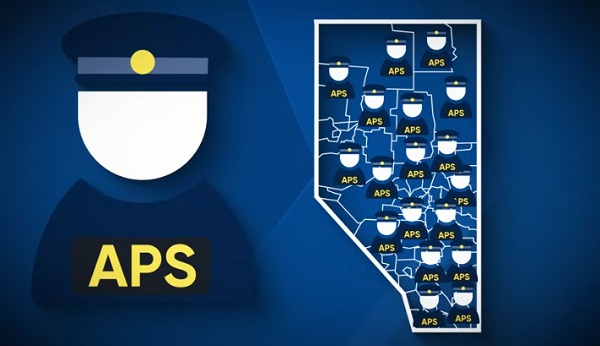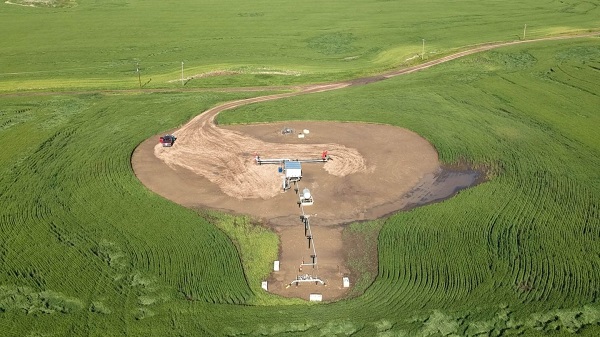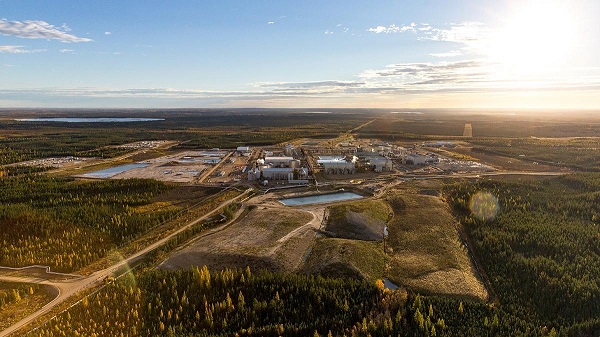Alberta
Federal electricity regulations threaten Albertans with high costs and power outages
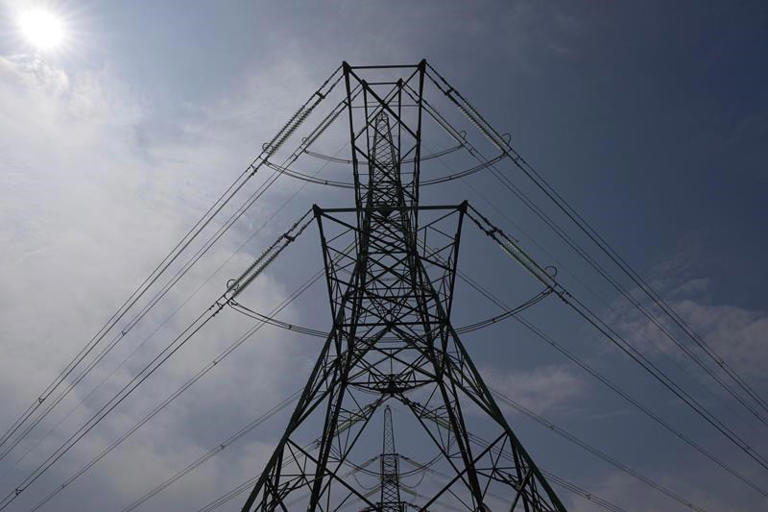
Alberta responds to dangerous federal electricity regulations
Alberta has submitted detailed analysis showing why proposed federal regulations will threaten the province’s electricity grid.
Alberta is rapidly reducing emissions and targeting a carbon-neutral grid by 2050. Electricity emissions have declined by 53 per cent since 2005 and the province will have phased-out all coal generation by early 2024.
However, in August, the federal government released its draft Clean Electricity Regulations, which propose rigid rules to try and achieve net-zero electricity by 2035.
Based on expert analysis and industry consultations, Alberta’s government has submitted a detailed response outlining the technical problems with these regulations. The province’s analysis found that these regulations are unrealistic, ineffective and could compromise grid reliability to an unacceptable degree, resulting in the very real risk that Albertans will not have access to an essential service, like power, when they need it.
“These regulations are irresponsible and reckless, setting unrealistic targets and even banking on technologies that don’t exist. They will result in Albertans shouldering an unbearable cost for an electricity system that will no longer deliver the safety, reliability and affordability upon which our lives depend. We will not permit these dangerous and unconstitutional regulations to be imposed upon our province.”
“The standards and enforcement that Ottawa is proposing would put the safe, reliable and openly competitive market of Alberta’s electricity system at risk, all for targets that aren’t feasible or realistic. We cannot allow the reliability of our electricity to be compromised and risk public safety during the coldest months of the year, when people need the power most. We urge Ottawa to abandon these regulations and work with us on a realistic path that aligns with our own emissions-reduction goals.”
Some of the key problems outlined in Alberta’s technical submission include:
Flawed modelling creates unrealistic targets
The modelling tools used by the federal government lack the capability to properly assess Alberta’s energy-only market, including the province’s large share of cogeneration. The federal tools also use incomplete proxies to evaluate system reliability, leading them to drastically underestimate the negative impacts.
The federal modelling also relies heavily on technologies that are currently not ready to be deployed, assuming that they will soon be easily or quickly available. As a result, the federal modelling offers an unreliable and inaccurate picture of the costs, impacts on reliability and outcomes of these regulations. With better modelling, the federal targets would be unachievable.
Unachievable standards
The regulations propose unachievable emission standards, with limited flexibility and using a rigid approach that will not work. The standard is also based on unproven design specifications that will be very challenging for operators to meet, even under optimal conditions, and potentially impossible given the operational variability that occurs in electricity grids on a daily basis.
Notably, Ottawa’s standard is significantly higher than those proposed in the United States in May. Standards need to be based on actual performance.
Creating a retirement cliff
The proposed regulations set an end of prescribed life of 20 years, despite the typical operating life of natural gas units being closer to 45 years. This will create stranded assets and massive retirement “cliffs,” as large numbers of natural gas facilities go off-line.
Approximately 55 per cent of Alberta’s existing and approved natural gas generation installed capacity would be subject to the federal emissions standard by 2035. The unnecessary retirement of best-in-class natural gas units would have massive negative impacts on Alberta’s electricity system.
A one-size-fits-all approach won’t work
It is clear that the federal government drafted these regulations based largely on the electricity systems of Canada’s three largest provinces, which primarily rely upon hydroelectricity and nuclear energy.
Regional differences must be recognized, including flexibilities for those jurisdictions most negatively affected by the regulations. When Ottawa exempted home heating oil from the carbon tax, they recognized the need for this flexibility. Alberta and all provinces deserve the same consideration.
Flawed understanding of natural gas
Alberta currently relies on natural gas for more than 70 per cent of its generation. Alberta’s grid reliability is maintained through natural gas generation to backup and balance intermittent sources of power such as wind and solar. Considering the seasonality of renewable resources, Alberta anticipates the need for efficient high-capacity abated natural gas units for decades to come.
The regulations are so rigid and strict that they will effectively make it economically unviable for companies to build and operate natural gas facilities, including abating emissions through carbon capture, utilization and storage (CCUS).
Inflexible and punitive compliance options
The draft regulations are unnecessarily punitive with inflexible compliance options. As written, generators must not emit or they could face criminal penalties under the Canadian Environmental Protection Act, which includes a threat of incarceration. The regulations also increase red tape, increase costs, and offer very little flexibility for industry.
Limiting new technologies
The proposed federal electricity regulations will limit the adoption of important new technologies like hydrogen and CCUS by setting unproven and unrealistic performance standards for facilities. This imposes high costs, introduces investor risk, and creates challenges such as older facilities not being able to upgrade or retrofit new technologies. The result will be added costs and grid reliability risks.
Risks to reliability and safety
Alberta requires reliable electricity power in periods when intermittent sources are not generating. In December 2022, the 5,000 megawatts of installed renewable capacity generated as little as 187 megawatts of energy at one point during a period of cold weather with little wind or solar generation. Natural gas was needed to keep the province from experiencing blackouts.
The proposed allowable peaking provisions – needed to ensure that power is available at any time, under any weather conditions – will result in Alberta not having enough power available when needed most. This is dangerous and irresponsible. The proposed low annual-run-hour limit and emissions restrictions do not enable natural gas assets to respond when needed to increasing demands and the variability of intermittent generation.
A ridiculous approach to emergencies
The proposed treatment of emergencies is unacceptable. It is untenable for the federal government to require post-emergency sign-off by a federal minister. Alberta’s provincial system operator knows best when we have an emergency, not politicians in Ottawa. Provinces must have flexibility to call on generators during emergencies to protect the safety and security of families and businesses, without the threat of punitive action on system operators or generators.
Inadequate financial support for those hit hardest
The federal government released the draft regulations without providing the financial supports needed to enable this transition. Any claims otherwise are false. Federal modelling indicates the regulations will cost $58 billion – since 60 per cent of the net costs will fall on Alberta, the province should receive 60 per cent of the necessary federal funding. Also, the $58-billion figure is likely incorrect as it’s based on flawed modelling and does not adequately consider the distribution and transmission and other costs that will be required. Other third-party assessments further estimated the costs reaching into the trillions.
Next steps
Alberta continues to call on the federal government to respect jurisdictional authority and the enshrined rights and responsibilities of the provinces. The Supreme Court of Canada’s decision on the Impact Assessment Act confirmed the unconstitutionality of the federal government’s ongoing efforts to interfere with electricity and natural resource sectors of all provinces.
The Alberta-Ottawa working group continues to discuss how to bring Ottawa’s efforts to achieve carbon neutrality in the economy in line with Alberta’s Emissions Reduction and Energy Development Plan. If this alignment is not achieved, Alberta will chart its own path to protect its citizens and economy by ensuring the province has additional reliable, affordable and sustainable electricity brought onto the power grid.
Alberta officials will continue to share technical information and analysis on these regulations with the federal government as required to achieve a more practical and realistic approach.
Quick facts
- Alberta has reduced electricity emissions by 53 per cent since 2005.
- According to Canada’s Constitution, legislating and regulating the development of electricity explicitly falls within the jurisdiction of the province (92A (1) (c)).
- The Alberta Electric System Operator found that Alberta would face disproportionate risk and costs, compared with other provinces, as a result of the federal electricity regulations.
- The Public Policy Forum previously indicated that the cost of the federal electricity approach could be more than $1 trillion and as high as $1.7 trillion.
Alberta
Alberta judge sides with LGBT activists, allows ‘gender transitions’ for kids to continue

From LifeSiteNews
‘I think the court was in error,’ Alberta Premier Danielle Smith has said. ‘There will be irreparable harm to children who get sterilized.’
LGBT activists have won an injunction that prevents the Alberta government from restricting “gender transitions” for children.
On June 27, Alberta King’s Court Justice Allison Kuntz granted a temporary injunction against legislation that prohibited minors under the age of 16 from undergoing irreversible sex-change surgeries or taking puberty blockers.
“The evidence shows that singling out health care for gender diverse youth and making it subject to government control will cause irreparable harm to gender diverse youth by reinforcing the discrimination and prejudice that they are already subjected to,” Kuntz claimed in her judgment.
Kuntz further said that the legislation poses serious Charter issues which need to be worked through in court before the legislation could be enforced. Court dates for the arguments have yet to be set.
READ: Support for traditional family values surges in Alberta
Alberta’s new legislation, which was passed in December, amends the Health Act to “prohibit regulated health professionals from performing sex reassignment surgeries on minors.”
The legislation would also ban the “use of puberty blockers and hormone therapies for the treatment of gender dysphoria or gender incongruence” to kids 15 years of age and under “except for those who have already commenced treatment and would allow for minors aged 16 and 17 to choose to commence puberty blockers and hormone therapies for gender reassignment and affirmation purposes with parental, physician and psychologist approval.”
Just days after the legislation was passed, an LGBT activist group called Egale Canada, along with many other LGBT organizations, filed an injunction to block the bill.
In her ruling, Kuntz argued that Alberta’s legislation “will signal that there is something wrong with or suspect about having a gender identity that is different than the sex you were assigned at birth.”
She further claimed that preventing minors from making life-altering decisions could inflict emotional damage.
However, the province of Alberta argued that these damages are speculative and the process of gender-transitioning children is not supported by scientific evidence.
“I think the court was in error,” Alberta Premier Danielle Smith said on her Saturday radio show. “That’s part of the reason why we’re taking it to court. The court had said there will be irreparable harm if the law goes ahead. I feel the reverse. I feel there will be irreparable harm to children who get sterilized at the age of 10 years old – and so we want those kids to have their day in court.”
READ: Canadian doctors claim ‘Charter right’ to mutilate gender-confused children in Alberta
Overwhelming evidence shows that persons who undergo so-called “gender transitioning” procedures are more likely to commit suicide than those who are not given such irreversible surgeries. In addition to catering to a false reality that one’s sex can be changed, trans surgeries and drugs have been linked to permanent physical and psychological damage, including cardiovascular diseases, loss of bone density, cancer, strokes and blood clots, and infertility.
Meanwhile, a recent study on the side effects of “sex change” surgeries discovered that 81 percent of those who have undergone them in the past five years reported experiencing pain simply from normal movements in the weeks and months that followed, among many other negative side effects.
Alberta
Alberta Independence Seekers Take First Step: Citizen Initiative Application Approved, Notice of Initiative Petition Issued

Alberta’s Chief Electoral Officer, Gordon McClure, has issued a Notice of Initiative Petition.
This confirms a Citizen Initiative application has been received and the Chief Electoral Officer has determined the requirements of section 2(3) of the Citizen Initiative Act have been met.
Approved Initiative Petition Information
The approved citizen initiative application is for a policy proposal with the following proposed question:
Do you agree that Alberta should remain in Canada?
The Notice of Initiative Petition, application, and statement provided by the proponent are available on Elections Alberta’s website on the Current Initiatives Petition page.
As the application was received and approved prior to coming into force of Bill 54: Election Statutes Amendment Act, the Citizen Initiative process will follow requirements set out in the Citizen Initiative Act as of June 30, 2025.
Next Steps
- The proponent must appoint a chief financial officer within 30 days (by July 30, 2025).
- Once the 30-day publication period is complete and a chief financial officer has been appointed, Elections Alberta will:
- issue the citizen initiative petition,
- publish a notice on the Current Initiatives Petition page of our website indicating the petition has been issued, specifying the signing period dates, and the number of signatures required for a successful petition, and
- issue the citizen initiative petition signature sheets and witness affidavits. Signatures collected on other forms will not be accepted.
More information on the process, the status of the citizen initiative petition, financing rules, third party advertising rules, and frequently asked questions may be found on the Elections Alberta website.
Elections Alberta is an independent, non-partisan office of the Legislative Assembly of Alberta responsible for administering provincial elections, by-elections, and referendums.
-
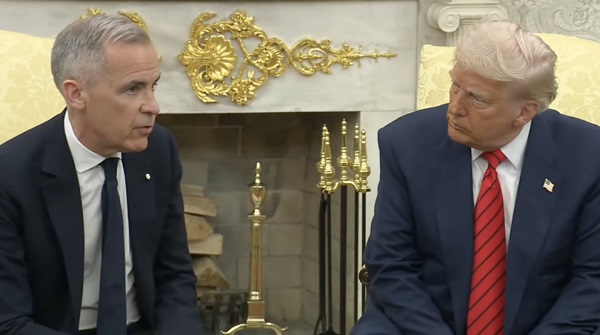
 Business1 day ago
Business1 day agoCanada Caves: Carney ditches digital services tax after criticism from Trump
-

 Alberta1 day ago
Alberta1 day agoAlberta judge sides with LGBT activists, allows ‘gender transitions’ for kids to continue
-

 Crime17 hours ago
Crime17 hours agoNational Health Care Fraud Takedown Results in 324 Defendants Charged in Connection with Over $14.6 Billion in Alleged Fraud
-

 Health17 hours ago
Health17 hours agoRFK Jr. Unloads Disturbing Vaccine Secrets on Tucker—And Surprises Everyone on Trump
-

 Business6 hours ago
Business6 hours agoElon Musk slams Trump’s ‘Big Beautiful Bill,’ calls for new political party
-

 Crime1 day ago
Crime1 day agoSuspected ambush leaves two firefighters dead in Idaho
-

 Business1 day ago
Business1 day agoMassive government child-care plan wreaking havoc across Ontario
-

 Alberta1 day ago
Alberta1 day agoAlberta Independence Seekers Take First Step: Citizen Initiative Application Approved, Notice of Initiative Petition Issued
